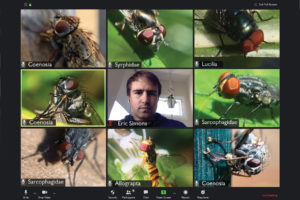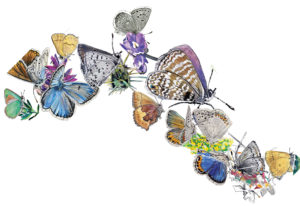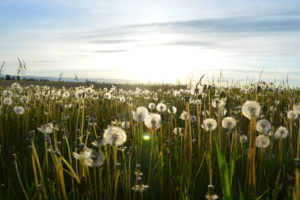It’s really not that hard to transform your garden into a welcoming habitat for native wildlife. But you do need to know where to start. Here are a few steps to help you begin:
1. Start small. Working in a small area makes the project manageable and increases the likelihood of success. Remove a patch of lawn, expand or create borders, or replace plants in a corner that has been troublesome, perhaps one that required a lot of water or chemical inputs.
2. Clear the ground. Dig out perennial weeds such as blackberry and ivy; pull up annuals such as chickweed. When you’ve finished, water several times over the next month, and pull any seedlings that appear. This technique, called presprouting, gives you a head start on recurring annual weeds.
3. Get to know your garden patch. The Pacific Ocean is the predominant factor in California’s climate, and it affects every Bay Area garden, keeping coastal summers cool and winters mild. Farther inland, temperature fluctuations are greater—hotter in the summer, colder in the winter. The varied topography of the Bay Area also creates microclimates in each neighborhood. Hills block or redirect wind and fog and rain, while valleys and gaps permit these forces to come pouring through. Thus a gardener in Martinez might deal with conditions different from one in Walnut Creek, and both work in circumstances quite different from a gardener in San Francisco’s Sunset District.
Each garden plot has its own particular conditions as well. Knowing the amount, and timing, of sun and shade is paramount in determining what you’ll be able to grow. Which direction does your garden face? When do shadows creep across it? If you live along a creek, you’ll need to find plants that do best in moist conditions.
How much rain your garden receives is determined by climate and topography, but there may be particularly cool and moist, or warm and dry, places in your garden. A low spot where rainwater consistently collects, for example, might create ideal conditions for a mini-wetland. A south-facing bed along a white wall will be the place to put sun-loving plants that want warmth.
Soil also influences what will grow and where. Get to know your soil by squeezing a handful when it’s moist. If it clumps together, then it’s mostly clay. If it falls apart, it’s primarily sand. The ideal soil, like a good potting mix, holds together loosely. It will drain well but also retain moisture and deliver nutrients.
Clay soils do not drain well, so if you have them, you’ll want to look for plants that tolerate poor drainage. If you want to grow natives that require good drainage (as many do), you can plant on a slope or build broad 18- to 24-inch mounds using a good garden soil mix.
4. Learn about local native plants. This means learning what naturally grows in your area and getting a sense of what does well in your garden’s conditions. Attend programs given by the local California Native Plant Society (CNPS) chapter; go on walks led by park naturalists; join work parties with a creek group doing restoration in your watershed.
To see what natives look like at different times of the year, visit the appropriate section of a botanic garden, or visit Bay Area nurseries that specialize in native plants. Are any of your neighbors growing natives? Ask what has worked for them.
5. Make a plan. Decide which plants you want to have in your garden, and how to lay them out.
As you plan, consider the needs of wildlife. Food, water, shelter, and places to raise young are the essential elements of wildlife habitat. Food means all things plant-related: pollen, nectar, berries, seeds, stems, and leaves. It also means bugs; they’re food for other bugs, for birds, mammals, reptiles, and amphibians. So avoid insecticides.
Moving water attracts more species than still water, but even a shallow basin on the ground, kept clean and refilled regularly, will provide birds with a place to drink and bathe.
To provide shelter for the greatest number of species, diversify the architecture of the garden; that is, select plants that will occupy different levels when mature. Also, a variety of plantings will provide reproductive space for more species. Leave leaf litter in place, and use mulch.
Keeping these elements in mind, draw up a plant list. Consider selecting and grouping species by community (e.g., grassland, coastal scrub, chaparral), since they are adapted to similar conditions and will do well together. These combinations can be very beautiful.
6. Buy plants and put them in! A good source of local native plants are sales held by CNPS chapters. Some botanic gardens sell native plants, and there are several “natives only” nurseries in the Bay Area. An increasing number of traditional nurseries also carry a selection of natives. (See “Native Plant Gardening Resources”.) Conventional wisdom holds that natives are best planted in the fall and winter, to capitalize on the rain. While this is true, native plants can be put in through the spring—they’ll just need watering to get established.
7. Tend the garden. The rewards of gardening unfold over time, as your awareness and experience grow. Help your plants get established with regular watering through the first two summers. Once established, most local natives should need no additional summer water, fertilizers, or pesticides. Keep weeding.

.jpg)



